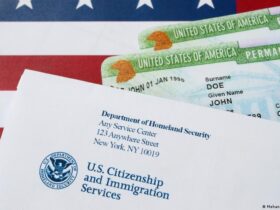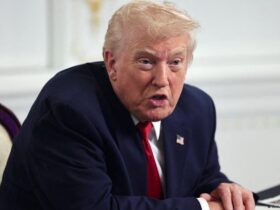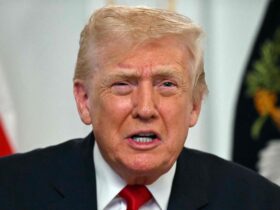Europeans are concerned over US President Donald Trump’s suggestion that billions of Russian assets stashed in European countries could be used to benefit the US government and companies.
Following Trump’s proposal on how to end Russia’s war in Ukraine, which called for Ukraine to give up territory and reduce the size of its armed forces, the Europeans rushed for damage control and have now introduced a counter-proposal.
“It changes every day with input,” Secretary of State Marco Rubio said after meeting with Europeans on the sidelines of the G20 summit in Geneva.
But it is unclear whether they will succeed in maintaining control over how Russian frozen assets are spent.
Agathe DeMaris, senior policy fellow for geo-economics at ECFR, said Russian assets worth billions appear to be Trump’s main motivation in pursuing a deal.
“Trump is very eager to get billions of dollars,” he told DW.
What are Russian frozen assets and where are they kept?
In 2022, when Russia invaded Ukraine, about 300 billion euros of its assets lay outside Russia and were frozen as a result of Western sanctions. These assets include bank accounts, securities, real estate and boats.
While many countries, including the United States, Canada, the UK, and Japan, have these assets, the largest share is in EU member states, and the largest share is in Belgium.
Brussels-based financial depository Euroclear holds about €180 billion of frozen Russian assets.
Since the war began the Europeans have been discussing whether and how to use Russian assets to pay for the war started by Russia. The last such discussion took place in October, when Belgium vetoed a “compensation loan” that the EU wants to give to Ukraine to rebuild the nation.
But Belgium fears legal troubles and the possibility that Russia will eventually demand its money back. That’s why Belgium refused to sign up and asked for the responsibility to be shared by other countries.
The EU hopes to address and win over Belgium’s concerns at an upcoming summit in mid-December. But Trump’s proposal scuttles that plan and instead offers what Demaris describes as a proposal to “seize Russian assets lying in Europe.”
What do the Trump proposal and the European counter-proposal on frozen assets say?
As reported in various media, according to the US President’s 28-point proposal, $100 billion (86 billion euros) in frozen Russian assets will be invested in “US-led efforts for reconstruction and investment in Ukraine.” Or as Demaris put it: Trump intends to take the first €86 billion of Russian assets frozen in Europe, and use it to benefit both the US government and US companies.
The plan also states that Europe will add a similar amount to increase the investment available for Ukraine’s reconstruction. The money that Trump wants Europe to contribute will not come from frozen Russian assets: “It will come from the pockets of European taxpayers,” Demaris said.
The remaining frozen funds, still amounting to more than €200 billion euros, will be invested in a joint US-Russian investment vehicle, “to create a strong incentive not to return to conflict.”
“This plan will benefit three entities – American companies, the U.S. government, and Russia,” Demaris said.
A counter-proposal from European powers Germany, France and Britain calls for the use of sovereign Russian funds to rebuild Ukraine. According to the plan, Moscow’s frozen assets in Europe will remain frozen “until Russia compensates for the damage it caused to Ukraine.”
“This is a way to somehow move forward together, but not yet seize Russian assets,” Philip Bednarski, Warsaw office director of the US German Marshall Fund (GMF), told DW.
“We are cool [at an] between [point]”But certainly in a much better place than what was proposed in the 28-point Trump plan — giving both the US and Russia the right to decide where those frozen assets can go without consulting the Europeans,” Bednarzyk said.
Can the US use Russian assets located in Europe to benefit US companies?
Jana Kobzova, co-director of the European Security Program at the European Council on Foreign Relations (ECFR), said the US has “only $5 billion” in frozen Russian assets and cannot decide how to use the assets held in European countries.
“The US can only make decisions regarding assets under its jurisdiction,” he said.
one in Paper for ECFR, Kobzova argued that Europeans should insist that, “the European public will accept the use of European-based Russian assets to stabilize Ukraine,” and supplement European spending on the country’s defense, “but it will be hard to accept that these will only generate mega-profits for American investors.”
European leaders have made clear their opposition to Trump’s plan.
“That Russian assets located in Brussels cannot be paid to the Americans is unimaginable,” German Chancellor Friedrich Merz told DW in an exclusive interview.
“Issues that directly concern the EU, such as sanctions, enlargement or stablecoins, require full participation in EU decisions,” EU Council President Antonio Costa said.
French President Emmanuel Macron told French radio station RTL that only Europeans can decide what to do with assets held by Europeans.
Bednarski said in the main the Europeans are not opposed to cooperating with the US on a strategy, and under former President Joe Biden, they wanted to collectively decide how to deal with frozen Russian assets. but not anymore.
“The dynamics have changed,” Bednarzyk said. “Trump has little respect for the European voice and often goes over Europe’s head.”
Experts argued that now is the time for the EU to bring Belgium on board and move forward quickly.
“If the EU freezes assets and issues loans to Ukraine, Trump will not be able to get the 300 billion euros,” Demaris said.
Edited by: Carla Bleiker






Leave a Reply